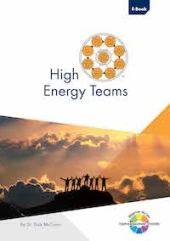Who Are We?
The High-Energy Teams Model begins with a simple but powerful question: Who are we? This is where team self-awareness starts—by understanding not just how people work, but what drives them.
High-energy teams know each other well. They understand individual work preferences, risk orientation, and the values that shape behaviour. When these differences are recognised and respected, teams build stronger trust, reduce friction, and collaborate more effectively.
🎥 Watch the Video: Understand your team from the inside out.
What does "Who Are We?" explore?
-
Work preferences – What types of tasks energise your team members? What roles do they naturally lean into? The Team Management Profile helps you map this across your team.
-
Risk orientation – Do individuals lean more toward spotting opportunities or anticipating challenges? The Opportunities-Obstacles Quotient (QO2) Profile provides insights into how your team approaches uncertainty and decision-making.
-
Work values – What matters most to each team member? The Window on Work Values Profile uncovers hidden motivators that can shape behaviour, motivation, and satisfaction.
These three levels—preferences, risk orientation, and work values—are explained through the Workplace Behaviour Pyramid, a powerful model for team insight.
Why "Who Are We?" matters
When team members don’t understand each other, small misunderstandings can snowball into inefficiency, frustration, or disengagement. But when people are clear on their own preferences—and those of others—they collaborate more effectively, manage conflict constructively, and bring out the best in one another.
Teams that invest in understanding who they are build stronger foundations for trust, alignment, and accountability.
Reflect on your team
-
Do your team members know what makes each other tick?
-
Are any strengths underused or misunderstood?
-
Are differences in approach creating tension—or sparking innovation?
-
How well do people adapt to working outside their natural preferences?
Next steps
📌 Build a shared language. Using tools like the Team Management Profile (TMP) helps your team talk about differences with clarity and respect.
📌 Uncover hidden dynamics. The Opportunities-Obstacles Quotient (QO2) Profile shows how your team perceives risk—a critical insight when making decisions or navigating change. The Window on Work Values (WoWV) Profile reveals the core values that influence motivation, behaviour, and alignment—often the unseen drivers of team dynamics.
📌 Use an accredited practitioner to facilitate a workshop. A structured team session can bring these insights to life, helping your people understand themselves and each other in a whole new way.


